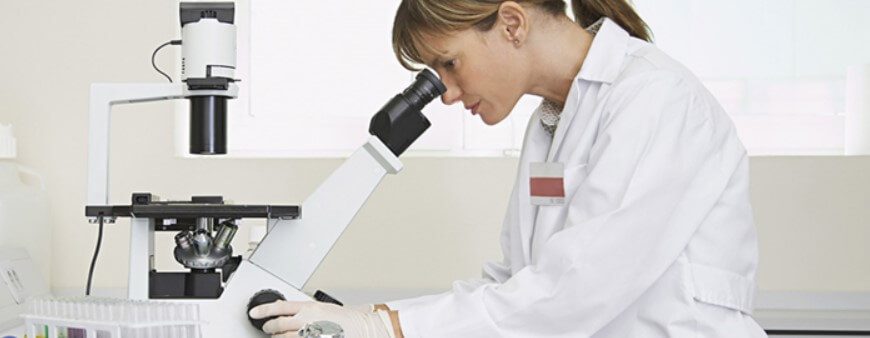
by Stemedix | Nov 20, 2023 | Studies, Age Management, Alzheimer’s Disease, Health Awareness
What you eat has a huge impact on your overall health, including your cognitive function. Your brain is a powerhouse that needs a constant influx of nutrients to function at its best, and some foods offer more of those nutrients than others. By adding the right foods to your diet, you can give your brain the boost it needs.
1. Fatty Fish for Omega-3
Eating fatty fish like salmon, sardines, and mackerel offers your brain a good dose of omega-3. Omega-3 is critical for normal brain function as well as for its development throughout all of the stages of life.
This fatty acid is present in the membranes of brain cells, making communication between them easier while also preserving them. Omega-3 also shows promise in improving brain function in people with memory problems, including Alzheimer’s, as well as those with mild cognitive impairment.
2. Leafy Greens for B Vitamins
Leafy greens like broccoli, spinach, and kale contain a large amount of B vitamins. These vitamins are essential for your brain health, helping boost the production of neurotransmitters, which are chemicals that deliver messages between neurons. Vitamin B9 helps with intracellular detoxification, as well as improving low moods.
Leafy greens also add iron to your diet, which you need for energy. The brain uses more energy than any other organ, so encouraging healthy red blood cells by eating more iron is essential for its proper function.
Another benefit of leafy greens is they are packed with antioxidants, boosting cognitive function, mood, decision-making abilities, and so much more. They can do this by reducing or eliminating free radicals that cause damage.
3. Berries for Reducing Cell Damage
Berries are full of flavonoids, including flavanol, which have anti-inflammatory and antioxidant properties that protect brain cells. Anthocyanins, which you find in red, blue, and purple berries, can cross the blood-brain barrier. They can protect the brain from diseases like cancer.
Eating blueberries increases blood flow to many areas of the brain, including those that control memory. The aging process can also slow down when you regularly add berries to your diet. This is because berries help create new neurons in the brain. Berries are also able to reduce inflammation and make nerve cells more flexible.
4. Whole Grains for Energy
Whole grains offer the energy your brain needs to stay healthy and function at its best. The fibers present in whole grains also aid in controlling blood pressure and reducing the chances of developing brain inflammation.
Whole grains are also rich in vitamin E, which helps the brain remain flexible throughout life. It has the potential to help people who have mild to moderate Alzheimer’s because of the way it reduces oxidative stress.
Vitamin E also helps regulate DHA; a type of omega-3 fatty acid crucial for brain function. In the brain, DHA forms DHA-PC, which is a component of neuron membranes. People with Alzheimer’s tend to have low levels of DHA-PC, so turning to vitamin E holds promise in its treatment.
5. Seeds and Nuts for Anti-Aging Properties
Seeds and nuts are full of nutrients, including zinc, which is important for memory enhancement. Walnuts offer great levels of omega-3 fatty acids to improve memory and brain function.
Many seeds and nuts are also full of vitamin E, which protects nervous cell membranes by targeting free radicals. Some seeds and nuts, like sunflower seeds, contain high levels of B vitamins, which are necessary for the production of neurotransmitters and the creation of cell structures.
6. Dark Chocolate for Antioxidants
Cocoa powder and dark chocolate are full of antioxidants like flavonoids, which gather in the parts of the brain that deal with memory and learning, helping slow mental decline. Chocolate is also a mood booster.
The flavonoids in chocolate improve blood flow to the brain as well. Chocolate also contains stimulating substances like caffeine and theobromine, which give brain function a short-term boost.
7. Oranges for Vitamin C
Oranges are rich in vitamin C, a key vitamin for preventing mental decline. Vitamin C helps boost memory, concentration, and decision speed while also helping fight off free radicals that cause damage to brain cells. Because of this, eating fruits and food options that are high in vitamin C can protect against conditions like Alzheimer’s.
Another way vitamin C helps the brain is by helping the process of forming new neurons, which is essential for memory and overall cognitive resilience.
Vitamin C helps with the formation of myelin sheaths that protect the neurons while also ensuring blood vessel integrity. This allows for better blood flow to the brain. It’s also necessary to convert serotonin into dopamine, making it essential for mood stabilization.
8. Eggs for Choline
Egg yolks offer a concentrated amount of choline, which is a micronutrient your body relies on to create acetylcholine. Acetylcholine is a neurotransmitter that regulates memory and mood. Higher intakes of choline are linked to better cognitive function and memory.
Eggs are also rich in folate. Folic acid shows promise in being able to minimize age-related mental decline. You also get vitamin B12 from eggs, which you need to synthesize brain chemicals while also regulating sugar levels in the brain.
Vitamin B12 is necessary for the formation of red blood cells and the normal functioning of the nervous system. Those with vitamin B12 deficiencies have an increased risk of cognitive impairment.
Helping Boost Your Brain’s Function
Ensuring you are getting the right nutrition is vital for all parts of your body, including your brain. By incorporating foods that provide antioxidative and anti-inflammatory benefits, free radicals have a harder time causing damage to brain cells. Additionally, including foods that offer B vitamins to your diet helps with the formation of neurons.
People with dietary problems sometimes may not have access to all the nutrients they need, which is why turning to vitamin infusions and oral supplements makes a difference. You can give your brain what it needs with minimal effort and without triggering allergies or other sensitivities.

by Stemedix | Nov 13, 2023 | Stem Cell Research, Alzheimer’s Disease, COPD, Parkinson's Disease, Regenerative Medicine, Stem Cell Therapy
Regenerative medicine using stem cell therapy has grown in popularity in the past years because of the promising results it has shown for the management of conditions, injuries, and other issues.
By understanding the power of stem cells, the options available, and the reasons why some people are hesitant while others urge research forward, you can decide for yourself whether they are the appropriate treatment option for you.
What Are Stem Cells, and How Do They Help?
Stem cells are undifferentiated cells with the potential to become and create specialized cells. They function as a repair system for the body, contributing to the process of tissue regeneration while also supporting normal growth and development.
Stem cells have two crucial and unique abilities: pluripotency and self-renewal. Pluripotency is the ability to become any kind of cell needed, and self-renewal refers to the way they can replicate themselves indefinitely, providing a never-ending supply of undifferentiated cells.
Different Types of Stem Cells
There are three broad categories of stem cells: embryonic stem cells, adult stem cells, and induced pluripotent stem cells. Each option has diverse applications and unique characteristics.
Embryonic cells come from blastocyst-stage embryos, which are embryos that are from three to five days old. They usually derive from in vitro fertilization clinics. At this stage, the embryo contains an inner cell mass capable of creating all of the tissues that make up the human body. Embryonic cells are fertilized in a lab and donated with full consent. But due to ethical controversy, it is widely used in research only.
Adult stem cells are found in various tissues and organs throughout the adult human body. These stem cells are multipotent, so they can transform into a limited number of stem cells. Adult stem cells help maintain tissue homeostasis and repair and replace damaged cells.
Adult stem cells include:
- Mesenchymal stem cells
- Blood stem cells
- Skin stem cells
- Neural stem cells
- Epithelial stem cells
Induced pluripotent stem cells are made by reprogramming certain adult stem cells into a pluripotent state with the use of genetic factors. These cells are similar to embryonic stem cells in the way they function.
Stem Cell Research: Why There’s Controversy
Using stem cells and performing stem cell research still poses challenges in ethics for some people, especially when turning to embryonic stem cells.
Concerns over when personhood begins make the use of embryonic stem cells more complex because there’s a worry about the moral status of embryos and whether they can be used or discarded.
It’s crucial to understand that the embryos that are used have never been in a woman’s body. They are embryos that fertility clinics would otherwise discard. Although the discarding of the embryos is not usually a controversy, the use of those same embryos for research creates controversy for some.
In this regard, induced pluripotent stem cells are more readily accepted because they don’t rely on embryos. Other issues can arise, however, when it comes to the actual process of researching stem cells. This includes oversight concerns as well as consent issues.
Arguments for Stem Cell Research
Because of the benefits that stem cell therapy offers, many scientists encourage research to improve treatments and learn more about how human bodies function.
Scientific Advancements
Stem cell research contributes to the understanding of cellular processes. This allows for the development of better treatment options, as well as a better comprehension of how some conditions form. Stem cells hold promise for the treatment of degenerative conditions like Parkinson’s disease, COPD, and Alzheimer’s.
Additionally, stem cell research offers the chance for scientists to understand how stem cells replace or repair damaged cells. This information would make it easier to provide targeted treatments that are more efficient and longer lasting.
Economic Boost
Using stem cells to create new therapies and medical technologies opens the door to the creation of new jobs and specializations. These advanced treatments can also help decrease medical costs, helping the economy in the long run.
Ethical Use of Discarded Embryos
Embryos that have been made via in vitro fertilization processes and have gone unused can serve a purpose instead of being discarded. Many argue that this is a better option than treating the embryos like medical waste.
Arguments Against Stem Cell Research
Those against stem cell research generally cite safety and ethical concerns centering on consent and exploitation problems.
Safety and Efficacy
Because stem cell therapies are still relatively new, there are worries about how effective they can be. The issue with this argument against stem cell research is that it fights against the very thing that would provide a definite answer as to whether stem cells are effective and safe: ongoing research.
Ethical Concerns
The ethical concerns mainly focus on the use of embryonic stem cells, including the worry about obtaining consent. In many instances, detractors suggest turning to induced pluripotent stem cells for research and avoiding embryonic cell use because of the ethical barriers that would slow the research down.
In other instances, the worry of consent focuses on the risk of the potential exploitation of vulnerable populations. Those against the research note concern about the possibility of future coercion and other similar activities.
However, as with any other form of research, the scientific community imposes strict guidelines designed to protect against these concerns.
Focusing on the Potential of Regenerative Medicine
Living with chronic conditions that affect quality of life usually means relying on medications, invasive procedures, and therapies that might manage some symptoms but don’t get to the root of the problem.
On the other hand, stem cell research offers the potential to not only understand the causes of some of the most debilitating conditions and injuries, but also to provide therapy solutions to help manage symptoms.
The path to learning more about conditions like COPD or Parkinson’s is not easy, but embracing new and promising treatment options can open a way forward. By tackling some of the ethical concerns people have about stem cells head-on, lives may be able to improve for many people around the world.

by admin | Jun 23, 2023 | Health Awareness, Alzheimer’s Disease
Caring for a loved one with Alzheimer’s disease can be emotionally challenging, especially when they experience agitation. Agitation is a common symptom of Alzheimer’s and can manifest as restlessness, pacing, aggression, or verbal outbursts. Witnessing your loved one in distress can be distressing for you as well. However, there are strategies and approaches you can employ to help manage and alleviate their agitation.
Here are some tips to assist you in supporting your loved one through this difficult time.
Identify triggers: Observe your loved one’s behavior and try to identify patterns or triggers that may lead to agitation. It could be certain activities, environments, or even specific times of the day. By recognizing these triggers, you can take steps to avoid or modify them, thereby reducing the likelihood of agitation.
Maintain a calm environment: Create a peaceful and soothing atmosphere for your loved one. Minimize noise, bright lights, and other sensory distractions that can contribute to agitation. Consider playing soft music or introducing familiar scents to promote relaxation.
Stick to a routine: Establishing a consistent daily routine can provide a sense of security and predictability for someone with Alzheimer’s. Help your loved one maintain regular sleep patterns, meals, and activities. Sudden changes or disruptions to their routine can increase agitation.
Practice effective communication: When interacting with your loved one, use simple and clear language. Speak slowly and calmly, maintaining eye contact. Avoid arguing or correcting them if they are confused or agitated. Instead, offer reassurance and validation of their feelings.
Engage in calming activities: Engaging your loved one in activities that they enjoy and find calming can help redirect their focus and reduce agitation. This could include listening to soothing music, doing puzzles, or going for a gentle walk together. Adjust the activities based on their abilities and interests.
Ensure physical comfort: Discomfort or pain can exacerbate agitation. Make sure your loved one is comfortable by addressing their physical needs. Check for hunger, thirst, or discomfort due to temperature. Regular exercise and massage can also promote relaxation and reduce restlessness.
Seek professional help: If agitation becomes persistent or unmanageable, it’s important to consult a healthcare professional. They can evaluate your loved one’s condition and suggest appropriate interventions or medications, if necessary. Additionally, support groups or counseling services can provide you with valuable guidance and emotional support throughout the caregiving journey.
Remember, caring for someone with Alzheimer’s requires patience and understanding. While you cannot eliminate agitation entirely, implementing these strategies can help alleviate your loved one’s distress and improve their quality of life. Don’t forget to prioritize self-care as well, as maintaining your own well-being is crucial in providing the best possible care for your loved one.

by admin | Nov 18, 2022 | Stem Cell Therapy, Alzheimer’s Disease, Stem Cell Research
Alzheimer’s disease (AD) is the most common cause of dementia, accounting for an estimated 50%-70% of dementia cases worldwide. Characterized by memory loss and cognitive impairment, AD is progressive, debilitating, and fatal. In addition, it’s estimated that new cases of AD around the globe are occurring at a staggering rate of 20 per minute with an established effective treatment yet to be discovered.
To date, research has demonstrated an advanced understanding of AD’s development and devastating – and eventually fatal – outcomes, but has only been able to identify drugs that intervene too late in the progression of the condition.
Considering that stem cells have a detailed and documented record of their ability of self-renewal, proliferation, differentiation, and transformation into different types of central nervous system neurons and glial cells and that they have been successful in AD animal models, it is believed that stem cells have the potential to treat patients with AD.
In reviewing the progress of stem cells as a potential therapeutic treatment for AD, Liu et al. call for new treatments, including the removal of toxic deposits and the ability to replace lost neurons to be developed and as a way to stimulate neural precursors, prevent nerve death, and enhance structural neural plasticity. The authors also review the pathophysiology of AD and the application prospect of related stem cells based on specific cell types.
Liu et al. point out that, although AD models using animal research have been demonstrated to be successful, animal research is difficult to translate into human trials, and, to date, none have been able to replicate the complex environment observed in the human brain. Considering this, the authors conclude that it is challenging, at best, to characterize the beneficial effects of stem cells in AD based solely on previously conducted animal models.
As a result of this review, the authors also conclude that while stem cells used in AD and animal models have achieved certain results, there are still several factors that require consideration. Among these factors is the fact that this type of stem cell therapy requires neurosurgical procedure and immunosuppression which contributes to ongoing concerns related to controlling the proliferation and differentiation of stem cells, the targeting of molecular markers, and the development of cell delivery systems.
The authors acknowledge that progression in the study of stem cells in AD applications should be made more efficient because of recent technological advances in stem cells, specifically using hydrogels, nano-technology, and light therapies to produce more efficient delivery of treatment.
While these advances should help, Liu et al. also point out that a number of obstacles, including uncertainty about the amyloid hypothesis, differing objectives related to preventing progression vs symptomatic treatment, and demonstrating the relationship between stem cell treatment and complete AD cure, still need to be addressed.
Considering the findings of this review, the authors conclude that stem cell therapy for AD carries enormous promise, but the successful application will most likely be dependent upon consistent early diagnosis of the condition in order to prevent further brain cell deterioration and will likely be combined with an administration of existing medication as a way to most effectively treat and/or prevent AD.
Source: Mesenchymal stem cell-based therapy for autoimmune diseases.” https://pubmed.ncbi.nlm.nih.gov/30623280/.

by Stemedix | Oct 10, 2022 | Alzheimer’s Disease, Stem Cell Therapy
Alzheimer’s disease is one of the most prevalent neurological conditions in the world, affecting more than 5.8 million people in the United States alone. While millions of people suffer from the condition, not everyone understands how Alzheimer’s really affects the brain. So how does Alzheimer’s affect the brain? Keep reading to find out!
How Alzheimer’s Impacts Your Brain
Alzheimer’s is a progressive neurological disease that results in damage to the brain. Alzheimer’s attacks the regions of the brain that are responsible for memory and language. This leads to severe memory loss and other cognitive symptoms.
The exact cause of Alzheimer’s is still largely unknown, but it has been linked to the buildup of plaque within the brain. It is also thought to be genetic in some cases, affecting multiple people from the same family.
Symptoms of Alzheimer’s
Treating Alzheimer’s relies heavily on an early diagnosis. In order to detect the disease as early as possible, you should be on the lookout for signs and symptoms that could indicate changes within the brain. The following are some of the most common signs of Alzheimer’s disease:
- Difficulty completing familiar tasks
- Unable to recall everyday information
- Getting lost in familiar locations
- Frequently misplacing things
- Mood swings and extreme behavioral changes
- Uncharacteristic decision-making
- Difficulty with finances
- Sudden poor hygiene or unkept home
While these symptoms can sometimes be attributed to mental health disorders like depression, they are often indicators of Alzheimer’s disease, particularly in older individuals. When you notice these signs in yourself or a loved one, being evaluated by a neurologist as soon as possible is vital for successful treatment.
Treating Alzheimer’s Disease
The way Alzheimer’s disease is treated has evolved in recent years. In the past, there were very few options in terms of slowing the progression of Alzheimer’s. Patients and their loved ones relied on behavioral intervention and other therapeutic approaches to cope with the symptoms of the disease.
Thanks to recent research, now there may be alternative options to help slow down the progression of Alzheimer’s and reduce the severity of symptoms.
One innovative approach involves regenerative medicine, also known as stem cell therapy. A patient’s own stem cells could potentially be used to heal the damage that Alzheimer’s causes to certain areas of the brain. Stem cell therapy also provides regenerative properties that could produce new neurons, replacing any damaged cells within the brain.
Research on stem cells as a treatment for Alzheimer’s is ongoing, but studies have shown that the approach is most effective when a patient is in the earlier stages of the disease. To learn more about ” How does Alzheimer’s affect the brain? ” and the options available at Stemedix, contact a care coordinator today!

by Stemedix | Jan 11, 2021 | Alzheimer’s Disease
If you or a family member has been diagnosed with Alzheimer’s, you’re not alone. More than 5 million people in the U.S. are living with some form of dementia. While receiving the diagnosis is difficult, there are still factors within your control, including how you decide to move forward. Here are some considerations as you adjust to a new diagnosis and things to keep in mind when adjusting to life With Alzheimer’s Disease.
Allow yourself an emotional response.
Some people jump right into practical steps for managing Alzheimer’s Disease by exploring treatment options. With that being said, it’s important to make space for the emotions you may be experiencing. Whether you’ve been diagnosed or it’s someone you love, you’re likely to feel a wide range of feelings. These are normal, and give yourself grace as you feel them. Some common emotional responses include denial, shock, anger, fear, and sorrow.
You could find yourself feeling several different emotions at once, or going through a cycle in which you feel them repeatedly. There’s no right or wrong way for them to appear, and everyone experiences them differently.
As you go through these feelings, here are some strategies that may help you promote emotional wellbeing:
- Journal
- Turn to support groups, either in person or online, or a counselor
- Maintain social interactions with loved ones
- Learn as much as you can about Alzheimer’s to make informed decisions
- Set up plans for the future now to alleviate future challenges
Support your physical wellbeing.
While Alzheimer’s leads to cognitive impairment, you’ll still want to focus on your physical wellness. For example, get routine checkups to ensure your hearing and vision are still strong, as sensory impairments could exacerbate symptoms such as confusion.
Exercise can also help keep you active and physically well, and there is also evidence to suggest physical activity can improve a person’s ability to perform activities of daily living (ADLs) in people with dementia. Be sure to follow a well-rounded diet to give your mind and body ample nutrients as well. Some foods, such as berries, leafy greens, nuts, and fish, appear to have cognitive benefits.
Additionally, give your brain a workout, too. Do crosswords, Sudoku, or other puzzle games to exercise your mental abilities, too.
Stay socially engaged.
Social interactions have a beneficial effect on several key brain functions. Thus, while you may feel tempted to withdraw from loved ones, it’s important to stay socially active. If you’re the loved one of a person who has recently been diagnosed, be sure to learn as much as possible about symptoms and behavioral changes so you know what to expect. Or, if you have Alzheimer’s, seek support groups in which the whole family can learn so everyone is on the same page. This can help to facilitate strong family support.
Of course, socializing outside the family is beneficial, too. The Alzheimer’s Association website lists support groups that meet regularly. Many people find it helpful to meet with others who have a firsthand understanding of the challenges they’re facing.
Implement strategies to ease your routine.
There are several tips you can try to help you maintain your confidence. For instance, tactics such as carrying a notepad, keeping a list of phone numbers near your phone, and maintaining a written schedule for each day are memory aids that can help you stay on track. You can also use devices like pillboxes to keep track of medication. Don’t hesitate to ask for assistance with certain tasks when needed, too. Simply having someone remind you of important events could be helpful. If you are interested in learning more about life with Alzheimer’s Disease then Contact us today!







 St. Petersburg, Florida
St. Petersburg, Florida
